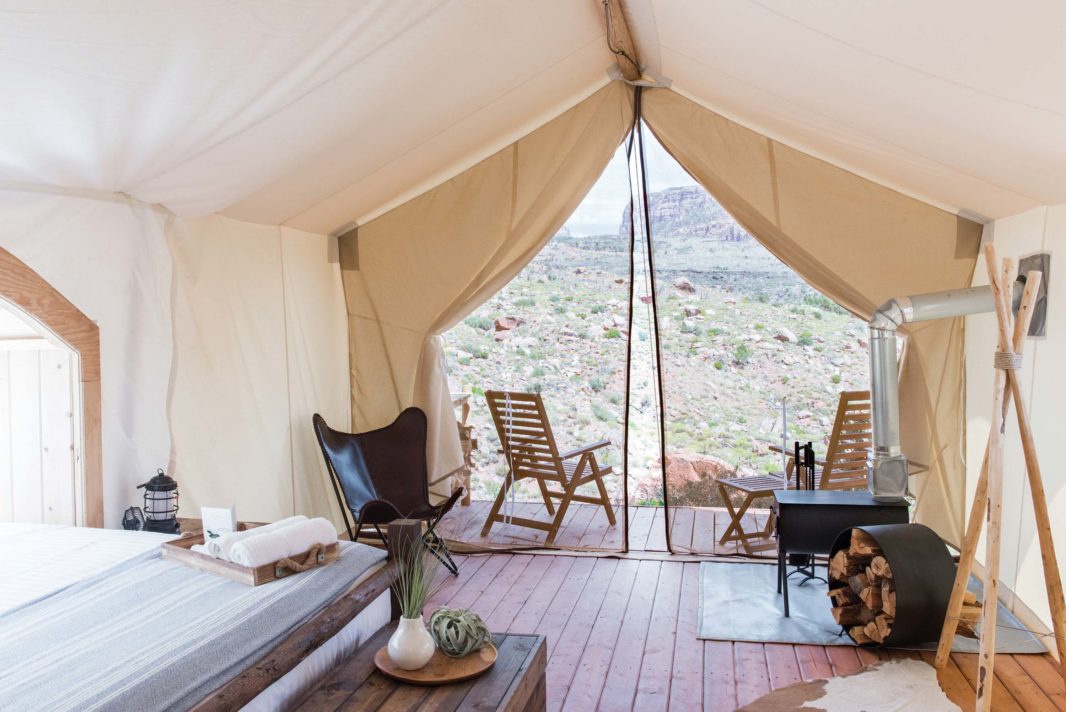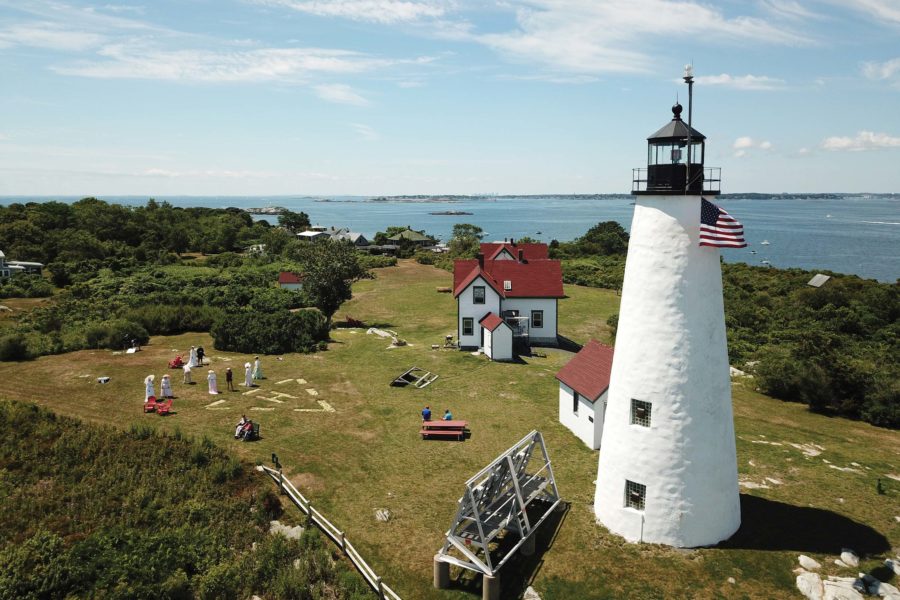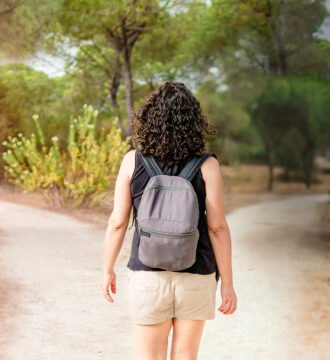My husband is first-generation American. During the summer of 2017, he and I flew our 4-year-old across the Atlantic to visit his relatives and take a two-week road trip through his family’s native Ireland.
While Ireland has a reputation for being a beautiful, welcoming country full of kind people—and from personal experience I can tell you that’s accurate—old Éire is also known to be, well, directionally challenged. Roads meander for kilometers, only some of them paved, almost none of them marked, and seem to accommodate scenic views rather than efficiency. You won’t be without the occasional spray painted sheep-clogged crossing, either—it’s not just a figment of Hollywood’s imagination.
Essentially, in Ireland, you find your intended destination on a wing and a prayer.
Unless, of course, your smartphone has an international SIM card or your car has a built-in navigation system. Ours did, so getting around proved to be unexpectedly uneventful.
And, that’s how it is these days: Point A direct to Point B, no time or place lost, generally no matter where you are—traversing the peaty bogland of Connemara or gridded, gritty blocks of Midtown Manhattan.
There’s comfort in being confident that we can get around a place that’s unfamiliar to us, isn’t there? Having Google Maps at our fingertips — literally — means that we won’t miss curtain call because we can’t find the theater and that we will be able to locate the nearest cafe for our daily soy latte before a migraine bangs in.
There’s the photo thing, too. Not only do we use technology to find excursions, or directions, while traveling, we use it to brag to our friends and family back home about how much fun we are having. A Forbes magazine’s 2016 report showed that 97 percent of millennials use social media while traveling, and 75 percent post to social networks at least once per day. That’s huge.
In February, CNN Business reported, “Research shows that never-ending digital distractions hurts your capacity to focus, think creatively, make decisions … and mak[e] the people you speak with feel valued and heard.”
But, do we realize that by training our eyes and our attention and our confidence on our phones, we’re pushing our experiential lens into our peripheral vision?
The truth is, smartphones have changed the way we engage, and this, in turn, has changed the way we travel.
The truth is, smartphones have changed the way we engage, and this, in turn, has changed the way we travel.
We are missing out. We’re missing out on real experiences, on the places and the people that are right in front of our faces because our faces are in our phones.
As hard as it is to believe, it’s only been 12 years since smartphones have taken over. Steve Jobs announced the iPhone in January 2007, and it was released later that year in June. “Every once in a while a revolutionary product comes along that changes everything,” he said at Apple’s unveiling.
So true.
While Gen Xers can wax nostalgic about travel pre-tech age, most millennials don’t really remember it at all — the oldest of this generation coming of age circa 2002 and the youngest, just last year.

FOTOLIA
Lough Nafooey in Ireland’s Connemara region
Not surprisingly, a December 2018 AARP Travel survey shows that millennial travelers are more likely, at 71 percent, than boomers, at 64 percent, to say they can’t travel in the U.S. without their phones. But, even boomers are on the bandwagon, with 54 percent bringing a smartphone on international trips and 92 percent bringing it on domestic vacations, although they’re more likely to use them to take photos than to check email.
Off-the-Grid Travel Is Trending
With all of that said, off-the-grid travel is trending. And, it’s not solely about the internet.
Sure, in our increasingly wired world, people are finding they want to unplug in order to break from a constant barrage of email pings, news alerts, social media feeds and texts.
Some are turning off their phones when they get away to new places. Others, take the notion a step further and go completely analog in a remote location. Think: a cabin in the Maine woods or a bungalow on a private island in the Caribbean. And, still others are seeking out purposefully off-the-grid resorts and excursions where they can get back to nature, meet new people, and enjoy the little things, uninterrupted.
You don’t have to do anything extreme to detox digitally. Say, like taking a 15-day reindeer expedition into the Siberian Arctic and hanging with the indigenous Nenets people, although you can, and, in fact, Intrepid Travel does.
Ultimately, traveling off the grid is about escaping the fast-pace of everyday life. It’s about connecting with places, their people and their cultures. It’s about making a lasting impression on your soul, fostering relationships and really living in the moment.
Ultimately, traveling off the grid is about escaping the fast-pace of everyday life. It’s about connecting with places, their people and their cultures. It’s about making a lasting impression on your soul, fostering relationships and really living in the moment.
The first time I went to Ireland, back in 2005, I got lost. A lot. I circled the Burren without ever finding it. I climbed wet, muddy hillsides looking for stone circles on the Beara peninsula, my direction to which was based solely on a pictorial brown road sign. My car got swarmed by crowds of people as a hurling game let out, and I was momentarily stranded somewhere in Westmeath, near Athlone.
But, I also met people. A lot of people. There was a couple in a Galway City pub who convinced me and my friend that we wouldn’t be able to drive the entire country in 12 days. Driving in Ireland is not like driving in the States, they said. There was the grizzled singer at the Muskerry Arms in Blarney with whom we had a good chat between sets. We found out he had performed at a neighborhood bar in a small town next to the one where I grew up. And, there was the lorry driver who changed our tire for us in the pouring rain. This was after I crashed into the curb on our way to the airport to fly home.
Almost 15 years later, I still think about that driver. I remember standing over him with an umbrella as he kneeled in a puddle and fought with the tire. I see him in my mind, but he’s nowhere to be found on my Instagram feed. And, that’s just fine by me.

THE NOMADIC PEOPLE
Under Canvas fancies up camping in Zion National Park in southwest Utah.
Need Ideas? Check These Out
You don’t need to pay anyone to tell you to unplug—just do it! Renting accommodations in remote areas is a good way to start, and neighbors will be at a minimum. Try a cabin deep in the woods near Big Bear Lake in California or near Mount Katahdin in Maine. There are also unique options like a lighthouse overnight on an island 16 miles off the Massachusetts coast, or go completely rustic with a historic fire lookout tower in states like Wyoming, managed by the U.S. Forest Service. Pretty much everything goes with Hipcamp, an Airbnb-style website for campers searching for camping spots—and these aren’t just the usual fare. Check out tent camping, treehouses, tiny houses and yurts at sites that range from ranches to nature preserves. There’s Under Canvas, which owns more than a half-dozen luxury glamping resorts complete with safari-style tents, king-sized beds and secluded, National Park locations from Zion to the Great Smoky Mountains. And, then, there’s Camp Bonfire, a tech-free, adults-only summer camp that encourages human interaction through activities like button making and foam-sword Capture the Flag. Ironically, Earthship Biotecture’s Taos, New Mexico, rental homes offer amenities like Wi-Fi and television, but the structures themselves are off-the-grid, meaning that they’re entirely autonomous—from their heating and electricity to their water harvesting and contained sewage treatment. Think tilapia ponds and indoor fruiting banana trees. Elsewhere, eco lodges promote green living. They can be found all over the world, usually in remote environments in countries like Kenya, South Africa and Chile.



 7 min read
7 min read



